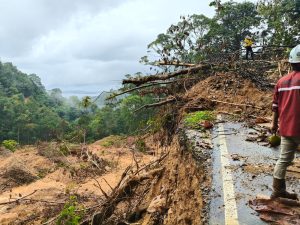Jakarta — Forest fires remain the single greatest threat to the world’s forests, even as deforestation continues to decline across all regions, according to the Food and Agriculture Organization of the United Nations (FAO) on Tuesday, October 21.
Zhimin Wu, Director of the Forestry Division at FAO, underscored the urgency of addressing fire-related forest loss during an online press conference. “The major threat facing forestry at a global level consists of three elements — deforestation, pests and diseases, and the biggest one, wildfires,” he said.
“Deforestation is now 10.9 million hectares every year, pests and diseases affect about 41 million hectares in 2020, and wildfires impact around 127 million hectares per year, according to FRA 2025,” Wu said, referring to the latest Global Forest Resources Assessment 2025 (FRA 2025) released during the Global Forest Observations Initiative (GFOI) Plenary held for three days in Bali from Tuesday, October 21.
The report also says “fire affects an average of 261 million hectares of land annually, nearly half of which is forested.”
“To protect, restore, and sustainably use our forest resources, we need to halt and reverse the trend of continuous forest fires,” Wu added.
Deforestation slows, but pressures persist
The report shows that global deforestation has slowed considerably over the past decade, with a net loss of 4.12 million hectares annually between 2015 and 2025, down from 10.7 million hectares in the 1990s. Forests now cover 4.14 billion hectares — about one-third of the planet’s land area — with nearly half of them located in tropical regions.
FAO’s assessment found encouraging progress: over half of the world’s forests are now under long-term management plans, and one-fifth are in legally protected areas. Primary forest loss has halved since the early 2000s, and global forest carbon stocks have increased to an estimated 714 gigatonnes.
FAO Director-General Qu Dongyu, in his foreword to the report, described the FRA 2025 as “the most comprehensive and transparent global evaluation of forest resources and their condition, management, and uses.” He emphasised that the data are essential to informing policies, investments, and global cooperation toward sustainable forest management.
The FRA 2025 is based on data from 236 countries and areas, compiled through a country-driven process involving 197 national correspondents and more than 700 experts worldwide. This extensive collaboration strengthens monitoring of key global commitments, including the 2030 Agenda for Sustainable Development, the Paris Agreement, and the UN Strategic Plan for Forests 2017–2030. (nsh)
Banner photo: ©FAO/Vasily Maksimov














